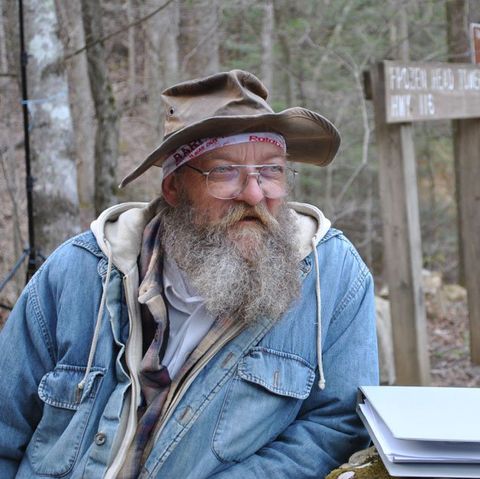Absurd Athletics
The Barkley Marathons is one of the most strange and intense athletic events in human history.

Photo by SUBMITTED
Lazarus Lake, the race’s evil mastermind
This weekend saw many Eau Claire runners, walkers and joggers take part in the Shamrock Shuffle, a 5K run/walk hosted by UW-Eau Claire’s recreation department.
The race is a great, accessible event for anybody looking to try their hand at endurance sports. However, if you’re looking for a little more challenge, you might want to take a look at the annual Barkley Marathons, which began two days before the Shamrock Shuffle.
Okay, so this event may actually be much, much more difficult than a local 5K. It’s important to note that, though it began two days earlier, the Barkley Marathons officially ended this year around the same time the Shamrock Shuffle did.
That’s because the Barkley Marathons is categorized as an “ultra-marathon,” clocking in around 100 miles in length, and competitors have around 60 hours to complete this grueling distance.
The extreme length is only the tip of the iceberg for what Runners World describes as “one of the hardest races in the ultra running world.”
The race is the brainchild of evil mastermind Gary “Lazarus Lake” Cantrell.
Inspired by the story of an attempted prison break from Brushy Mountain State Penitentiary, the race takes place in Frozen Head State Park, Tenn., which borders the now-defunct prison.
Aspiring Barkley competitors have to apply for a limited number of slots each year, with 1200 people entering for only 40 available spots in 2017. The application process is a word of mouth process, involving submitting essays and other strange steps.
If a competitor is accepted, registration fees vary.
According to the race’s official website, if it’s the runner’s first time in the Barkley, the fee is a license plate from their home state. If they have competed (and failed to finish) before, the fee is a pair of “gold-toed dress socks.”
If they are one of the race’s 15 all-time finishers, the fee is a pack of regular Camel filter cigarettes.
Cantrell’s personality permeates every aspect of the race.
The exact start time of the race is a surprise each year, beckoned on by the blowing of a horn which calls runners to the start line, and the official beginning of the race is marked by the moment Cantrell lifts a cigarette to his lips and lights it.
According to competitor Matt Mahoney, the race is structured as five 20-mile loops, each considered its own “marathon,” explaining the strange pluralization of the race’s title. In order to continue the race, each loop must be completed in under 12 hours.
Battling sleep deprivation and exhaustion is a major component of the race, as runners must ration time for rest while still having enough time to complete each loop.
The loop’s course is often unclear, so runners must collect pages from nine to 11 (depending on the year) different books that are scattered around the course to prove they completed the entire route.
This adds an element of orienteering to the race, which is only further complicated as runners’ mental function deteriorates due to exhaustion over the course of the race, according to Running Magazine.
Sleep deprivation horror stories from the race are common, with hallucinations being all but expected for anyone who makes it to the later stages of the race without dropping out.
Karel Sabbe, one of this year’s top competitors, was forced to drop out of the race after mistaking a trash can for a person and subsequently being picked up by the local Sheriff’s department.
In the Barkley Marathons, the goal is simply to finish, or at least survive, rather than win. Out of roughly 1000 competitors since the race’s inception in 1986, there have only been 15 finishers.
The Barkley Marathons is one of the most intense and strange athletic events in human history.
Grueling in length and difficulty, engrained with esoteric traditions and all the design of one sinister man, this race is an endlessly fascinating look at the world of extreme ultrarunning.
If any of this has caught your attention, check out “Where Dreams Go to Die” on YouTube, a fantastic documentary exploring one runner’s attempt at joining the race’s elusive pantheon of finishers.
“The Barkley Marathons: The Race That Eats Its Young” is another great documentary on the race.
Porisch can be reached at porischn7213@uwec.edu.

Nick Porisch is a third-year English student, and this is his fourth semester at The Spectator. Most of the time you can find him just sitting around someplace, potentially writing but usually just sitting. On the rare occasion he’s not sitting around, he might be rock climbing or running. But most likely he’s just sitting somewhere.

